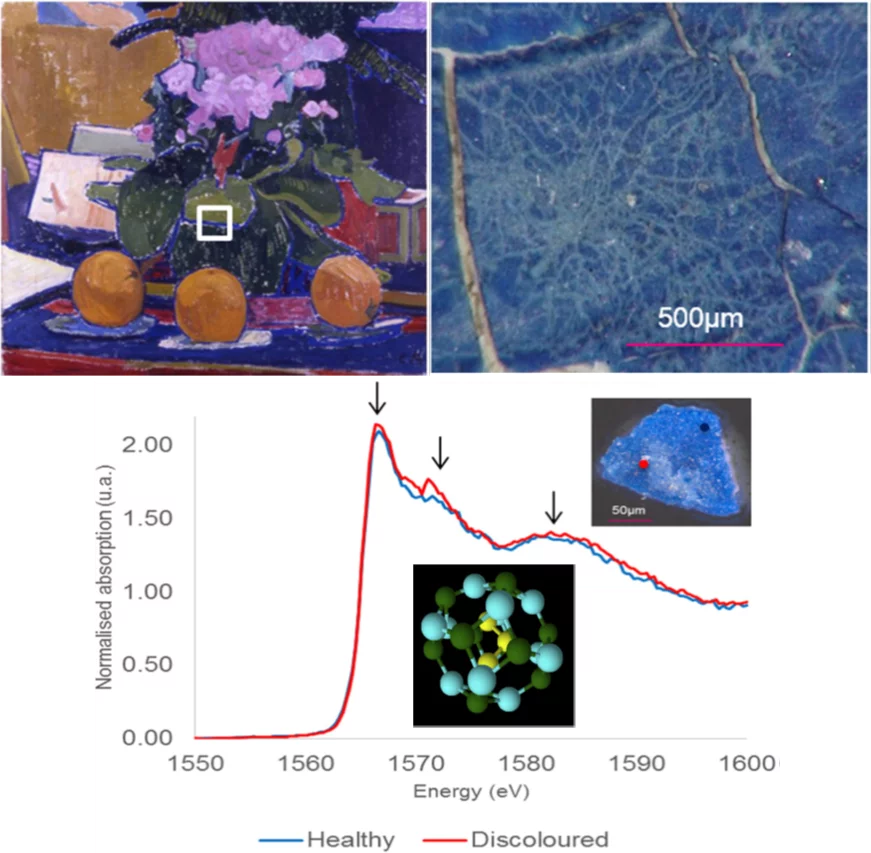A specific case of synthetic ultramarine degradation was observed in three oil paintings from the early 20th century. Pigment particleswere found to have been discoloured, resulting in intricate patterns ofwhite lines, approximately 10 to 30 microns wide, criss-crossing the paint surface. Colour in ultramarine pigments comes from the encapsulated sulphur radical anions, chromophores, inside the cage framework built from SiO4 4 − and AlO4 5 − tetrahedral units linked by the oxygen atoms. In healthy pigment, the charge is balanced by cations such as sodium and the framework stabilises the reactive radicals, preserving the colour. This discolourationmechanismwas investigated using X-ray near edge spectroscopy (XANES). XANES was used at the aluminium K-edge to investigate the coordination of the Al atoms in the pigment framework. Using the focused synchrotron beamavailable at the PHOENIX beamline fromthe Swiss Light Source, scans with high spatial resolution (5 μm) and with a relatively low (2 μm) depth interaction could be performed, enabling analysis of the discoloured lines on samples collected fromone of the paintings. The comparison of spectra fromhealthy (blue) and discoloured (white) areas, supported a degradationmechanisminvolving the removal of aluminiumatoms from tetrahedral coordination in the ultramarine framework,which results in the formation of six-coordinate aluminiumcompounds separate fromthe pigment structure. This causes a permanent opening of the cage framework, enabling the reaction of the chromophore and subsequent colour loss..
Original Publication
Aluminium X-ray absorption near-edge spectroscopy analysis of discoloured ultramarine blue in 20th century oil paintingsEleanor Cato, Camelia Borca , Thomas Huthwelker, Ester S.B. Ferreira
Microchemical Journal, 126 (2016) 18–24
DOI: 10.1016/j.microc.2015.11.021
